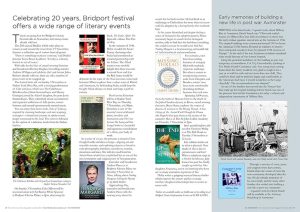
Apologies if there seems to be a common thread running through the John Davis book reviews this month (see also The Book Thief) but the Second World War, and the events that also preceded it and followed it, still holds a fascination for many writers.
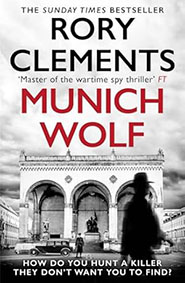
One of them is Rory Clements who has set this historical whodunnit in Munich during 1935 as the Nazi Party were beginning to take a real stranglehold on German life.
Munich, the state capital of Bavaria, attracted wealthy, aristocratic young people from Britain at that time, ostensibly to learn German and the local culture but more realistically to attend parties, swim in the lakes and drink copious amounts of beer.
Prominent among this group of Teutophiles is Unity Mitford, a real-life character, and one of the famous Mitford sisters, who became a personal friend of the Fuhrer, Adolf Hitler.
A friend of Unity’s, a high-born English girl is murdered and another later goes missing. Both cases end up on the desk of Detective Inspector Sebastian Wolff, a highly competent sleuth but well-known for his detestation of all things Nazi. He’s already had a short spell in Dachau for falling foul of the authorities.
To make matters worse, Wolff is given a new assistant, Sergeant Hans Winter, a by-the-book member of the Gestapo. Is he there to help or just to inform?

The word Stasi used in the title of the second book is the abbreviated name given to the Secret State Police that operated in Communist East Germany before the fall of the Berlin Wall.
Stasi Wolf is set in the mid-1970s when the organisation was making full use of improved technology including hidden cameras and wire-tapping to monitor its citizens. (The excellent film The Lives of Others is set in the same period.)
Hard to reveal the plot without spoilers but briefly, detective Karin Meuller, proud of her country’s progress but sceptical of its practices, is sent to the ‘model’ town of Halle-Neustadt to investigate a case of missing twins. Surely though such things don’t happen in this ‘utopian’ state so it’s hard to solve a crime where you can’t ask questions or appeal to the public.
Readers who like to mix their genres, good history and a crime investigation, juxtaposed, will enjoy these well-paced thrillers. Different in many ways but also illustrating the difficulties of working in a police system straight-jacketed by rigid state control.
Review by John Davis
The Book Thief by Markus Zusak
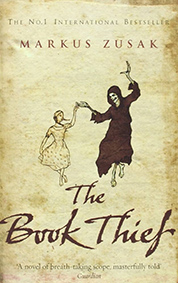
Many novels make use of a narrator in order to introduce characters, describe a location and pass telling observations but I can’t think of another one in which the narrator is Death.
You may be wary at first but run with it and you will come to find him (for equality’s sake, you could substitute her) philosophical and even perceptively moving at times as he (she) comments on what is unfolding.
The book thief of the title is impressionable young Liesel Meminger who, in a desire to learn how to read, commits her first theft following the death of her brother in late 1930s Germany. The book she steals is The Gravediggers Handbook which she takes with her when she is re-housed with foster parents.
Kindly foster father Hans Hubermann teaches her to read the book and, being a signwriter by trade, sets up a special dictionary for her on the walls of the cellar where she can add new words in chalk as she learns them.
Later her ‘larceny’ is encouraged by the wife of the local burgomaster who conveniently leaves the doors and windows of her well stocked library open though you can imagine the trauma Liesel experiences when local Nazis decide to hold the customary book burning rally in the main square.
Add in characters like Liesel’s close friend Rudy, the village bully boy Franz, some stringent Nazi officials and Max, the Jewish refugee and you not only have a thought-provoking story but the chance to learn something about what life was like ‘on the other side’ during World War II. It’s easy to forget that these are Allied bombs which are falling on a civilian population.
Top rated historical novels
In place of another review this month, here is a list of the top six rated historical novels published during 2024 including the winner of the Walter Scott Prize, Hungry Ghosts.
The New Life by Tom Crewe published by Chatto
Life among and the difficulties faced by the gay community in late Victorian London.
Hungry Ghosts by Kevin Jared Hosein published by Bloomsbury Publishing
Living under colonial rule for Hindus in Trinidad during the 1940s.
My Father’s House by Joseph O’Connor published by Harvill Secker
A small group led by a priest aim to smuggle out escapees in German occupied Rome in 1943.
In the Upper Country by Kai Thomas published by Penguin Random House
Slaves from the United States of America who have escaped into Canada in the late 18th century.
Absolutely and Forever by Rose Tremain published by Vintage
A coming-of-age story for teenagers Marianne and Simon during the 1960s in Britain.
The House of Doors by Tan Twan Eng published by Bloomsbury Publishing
Life during the 1920s in the Malay States featuring a fictionalised version of writer Somerset Maugham.
By John Davis
Was Shakespeare just a pseudonym, a ‘cover-name’ for a man on the run?
In his book, Marlowe Unmasked, Malcolm Elliott, argues that Christopher Marlowe is the true author of the works attributed to Shakespeare.
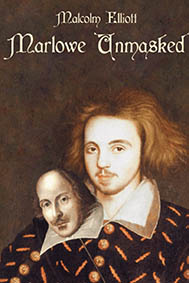
This book claims not only was Christopher Marlowe the real writer of Shakespeare, but that he escaped the gallows by the intervention of the queen and the provision of another man’s corpse dressed up as Marlowe to fool the authorities. The book makes even greater claims on our credulity by divulging that the Queen was not the virgin of popular mythology, but that she gave birth to fourteen children by several lovers.
All this was strenuously denied by Elizabeth, desperate to retain her popular image as ‘the Virgin queen’. Most men could be silenced, but one who could not was her own personal confessor, the archbishop of Canterbury, John Whitgift. To him she told ‘the secrets of her soul’, whereupon Whitgift blackmailed the queen, for the rest of her life, surrendering all matters of religion to his authority including the power of life and death over his enemies.
While most people today would accept Elizabeth’s claim not to have to lost her virginity, there is widespread evidence to undermine such belief. As long ago as 1948 a one-time editor of The Daily Mail, Comyns Beaumont, wrote a book on The Private life of The Virgin Queen, in which he told of her affair with Robert Dudley, but it failed to tell the full story of her suffering the attentions of Admiral Tom Seymour and of Philip of Spain’s attentions while he was failing to enjoy conjugal felicity with her sister Mary. When Queen Mary died Elizabeth refused Philip’s offer of marriage. Their offspring were called Philip and Mary and both adopted by the Sidneys.
Elizabeth’s next baby was the result of an indiscretion with Francis Walsingham. The baby was given to the family of Nicholas Bacon and became Francis Bacon, the future head of the Secret Service and front-runner in the current stakes as the true author of Shakespeare’s legacy. About this time Elizabeth began a relationship with Robert Dudley, Earl of Leicester. Talk of marriage was abandoned after the suspicious death of his first wife, Amy Robsart, in a fall down the baronial stairs.
Elizabeth’s sexual appetite remained strong however, and she was evidently attracted by the young Marlowe. He was her favourite poet and had impressed her with his skill in water sports when he was chosen to retrieve a jewel from the bottom of the lake at Elvetham. So, when Marlowe was accused of heresy and threatened with the death penalty, she was willing to read a poem he composed, asking her to save his life. The poem was a gentle reminder of their earlier lovemaking, entitled Shall I die? Shall I fly? and it had the desired effect.
It was rediscovered in 1985 by an American researcher and widely accepted as by Shakespeare. It bears no relation to the known life of the man from Stratford upon Avon but can be seen as a clear response to Marlowe’s predicament in May 1593. Christopher Marlowe’s life was in danger. Branded as a heretic, he wrote the poem as a desperate plea to Queen Elizabeth. She responded by ordering the corpse of another man to be substituted for Marlowe’s and buried in Deptford churchyard. Elizabeth also ensured that the jury and coroner’s report would endorse the story as related in the official report. So Marlowe was dressed in the dead man’s clothes and sent across to France. He was safe, but ‘dead men tell no tales’ and he could never write under his own name again.
Fortunately, his publisher knew William Shakespeare, an actor who would be happy to put his name to anything Marlowe wrote.
Marlowe Unmasked by Ilminster based former lecturer and founder of the Leicester Victorian Society, Malcolm Elliott, is obtainable from Brendon Books of Taunton Visit: https://brendonbooks.org/product/marlowe-unmasked/
Sharing a Love of Art
For three decades Laurence Anholt has been inspiring young people and their parents through his beautifully illustrated stories of artists and their lives.
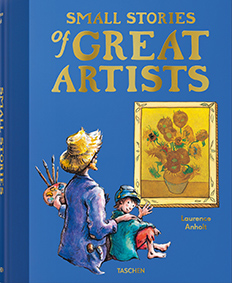
It’s been thirty years since locally based author and illustrator Laurence Anholt began his beloved series about great artists and the real children who knew them. For many of us they were charming bedside reading for our children and in some homes well thumbed copies are waiting patiently for another generation to enjoy them.
Since their initial publication, these classic tales of Vincent van Gogh, Frida Kahlo, Pablo Picasso, Leonardo da Vinci, and many other geniuses of Western art have provided a springboard into a lifetime’s love of art, selling millions of copies around the world. The stories have been adapted in many forms including ballet, opera, Braille editions for blind and partially sighted children, and a full-scale stage musical in Korea.
Now, a new anniversary edition, Small Stories of Great Artists, has been published with dozens of high-quality reproductions of the artists’ work, child-friendly biographies of the artists, and interactive questions for young readers. Each story is closely based on historical events and extensive research. In many cases, Anholt visited the artists’ homes and studios, walking in their footsteps and interviewing their relatives. He was granted private access to Monet’s house in Giverny and became close friends with Sylvette David (now Lydia Corbett), Picasso’s famous Girl with a Ponytail.
In order to make the artists and their worlds accessible to young readers, Anholt employs a unique device in which the events are seen through the eyes of a child protagonist who actually knew the artist. In this way, readers are able to “piggyback” through the story, and artists who might otherwise be inaccessible become humanised. On a subconscious level, the reader absorbs many inspirational themes such as kindness, self-esteem, perseverance, creativity, and courage.
A whole generation of readers have found a lifelong love of art through his stories and now they are passing that precious gift to their own children. The gift of art is golden. This volume features the following artists and their stories: Van Gogh and the Sunflowers; Frida Kahlo and the Bravest Girl in the World; Cézanne and the Apple Boy; Picasso and the Girl with a Ponytail; The Magical Garden of Claude Monet; Tell Us a Story, Papa Chagall; Degas and the Little Dancer; and Leonardo and the Flying Boy.
Early memories of building a new life in post-war Axminster
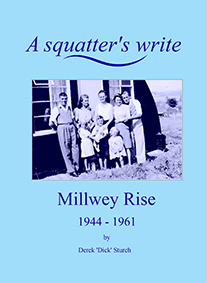
Writing in his latest book, A squatter’s write, about Millwey Rise in Axminster, Derek Sturch says “Obviously today’s houses on Millwey Rise bear little resemblance to those that the early civilian squatters moved into in the Autumn of 1946. The original buildings were constructed around 1943 to house the American 315th Station Hospital in readiness to receive their anticipated casualties from the planned 1944 invasion of Europe.” At the end of the war Axminster residents wondered what would become of the former hospital.
Citing the potential usefulness of the building as post war temporary accommodation, Col. D. J. Greenshields, speaking to The Public Health Committee said: ‘Any young man coming home from the Army would be very glad to rough it for a year or so with his wife and not more than one child. They could live there and be perfectly happy and comfortable, as the Americans had been. I myself, would live in the Camp cheerfully’. The recommendation was adopted.’
As one of the families that moved into the Nissan Huts that made up the hospital buildings Derek Sturch was one of the pioneers that laid the foundations for today`s vibrant and independent community of Millwey Rise.
Through a mixture of verse, prose and snippets from diary entries, Derek relays the stories of how the new community developed after the war. He also details memories of his own family and the many other families that settled into building a new life in post war Axminster.
A squattter’s write by Derek Sturch will be available at the Archway Bookshop in Axminster.



